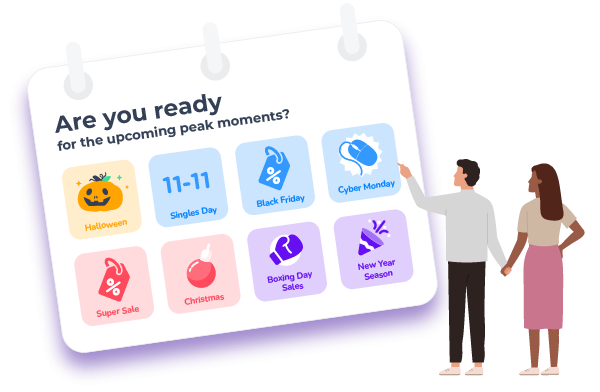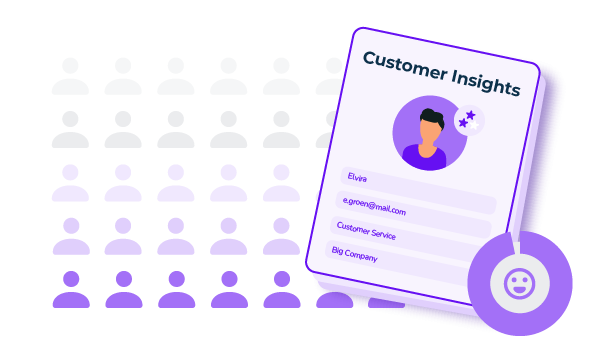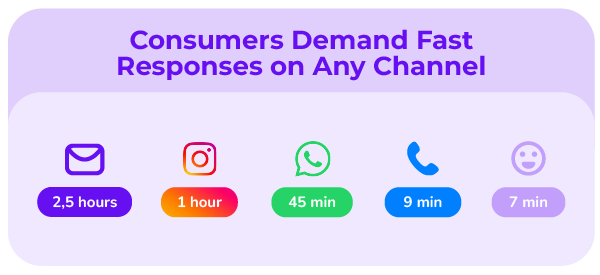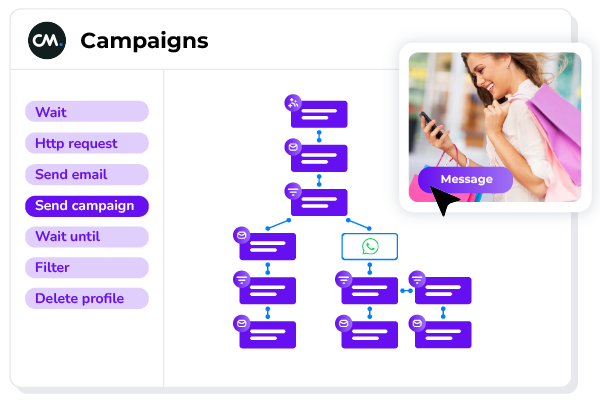- What Are Peak Moments in eCommerce?
- Why High Season Also Carries a High Risk
- Your Customer Service and Marketing Infrastructure Is a Mine of Data
- What Data Points Should I Take a Look At?
- 1. Service Interactions
- 2. Understanding Channels
- 3. Chatbot Effectiveness
- 4. Customer Journey Gap
- 5. Persistent and Repeated Issues
- 6. Marketing Campaigns
- 7. Wrong Chosen Metrics
- Two Main Themes for Preparing Q4 in eCommerce
- Start Preparing for eCommerce High Season with Data Today.
What Are Peak Moments in eCommerce?
Welcome to the holiday season: kicking off in November and rising steadily over December. Also called Q4, This is the peak sales season for retail and eCommerce sites everywhere.

This is great news if you sell products and services online … as long as you plan for it.
Because the biggest opportunities can also be the easiest to miss. Slow service at busy times. Customers kept on hold waiting for responses. Vital questions going unanswered, and poor user experience slowing each sale. A thousand things at key moments in the customer journey can stop your site, customer service team, or any other department from delivering what it should.
Why High Season Also Carries a High Risk
Many eCommerce retailers make the majority of their profits in peak season. More customers, higher-value baskets, more repeat business: what’s not to like? But it’s also when most are operating at maximum capacity. So if an unexpected service issue jams up your helpdesk for hours, customers will leave unsatisfied. And that means that people will simply give up and go elsewhere.
Communication can solve a huge number of these issues. And CM.com’s tools – from basic SMS alerts to sophisticated chatbots and customer service software- help you stay on top of your game during busy times.
But being responsive is only half the story. To make the most of eCommerce high season, you need to be predictive, anticipating where the pain points are going to be and being ready to answer them. Let’s look how data can help you out to tackle the most common challenges.
Your Customer Service and Marketing Infrastructure Is a Mine of Data
Keep records of your service, marketing, and sales interactions. Perhaps a database of common Q&As for your customer service agents to refer to, customer problems divided by type; standard data points like the length of call, and scores from post-interaction customer surveys. So far, so normal. But it’s possible to think about that data in a different way: as indicators for peak-season problems yet to come.
Every service interaction – from the distribution of common queries, to the information requested by customers, to the channels they use to message you and the keywords that pop up time and time again – is rich with insights. And analyzing them is the perfect prep for your busiest season ahead … if you start NOW.

What Data Points Should I Take a Look At?
Review data from previous years. Where were the chokepoints and bottlenecks which interrupted customer journeys the most, and which interactions led to the most successful outcomes?
These are 7 data points that help you to define pain points and to tackle them:
1. Service Interactions
What proportion of interactions ended with a satisfied customer, and can you discover if they made a purchase afterward? And do you also know what kind of questions occurs the most? You can start by looking into the data of different interactions with your customers. Do you see any connections or common threads? That could help you to prepare for busier times and, for example, update your FAQ or even optimize your chatbot. And if you do not have any systems to organize your customer service interactions, then start researching which tool fits best to your needs.
Data points to analyze examples:
Received messages
Phone calls
Handovers from chatbot to agent
Tags conversations - what kind of interactions are most occurring?
2. Understanding Channels
Is there a big difference in customer satisfaction between email, WhatsApp, voice calls, or other channels? And do you know how long customers want to wait for answers or services on specific channels? The point of being multichannel is to be equally effective on each, so customers aren’t corralled into one. (And your capacity can be more evenly spread, too.) Look back into your data and see what channels are important during peak moments and make sure you have those covered when more customers want to get in touch with you.
Read our research to learn more about channels and speed in customer service and prepare yourself for Q4 in eCommerce.

3. Chatbot Effectiveness
Chatbots help you to automate conversations and ensures that customers can contact you whenever they want. A chatbot provides you with very useful data about your customers. For example, you learn what customers are looking for and what kind of questions they ask. And what about the moment that a handover is needed to a human agent? As you now understand, your chatbot's effectiveness gives valuable information gathered during automated conversations. This will definitely will help you to prepare for coming peak moments.
Chatbot data to analyze:
Number of interactions during Q4 period last year
Labels or categories of automated conversations
Completion of conversations
How many handovers from chatbot to agent - human takeover rate
4. Customer Journey Gap
If you’ve mapped out typical customer journeys, are there specific points where losing the customer is higher than usual? (Hint: there are.) Look for correlations between service interactions and abandoned baskets; look at returns due to a poor aftersales experience. Or dive into your former marketing campaigns and search for opportunities to create even better one-to-one personalized campaigns. Maybe you'll discover that newsletter engagement is way higher via WhatsApp than traditional email. Map out the customer journey, combine it with data you have, and improve where needed.

5. Persistent and Repeated Issues
If one customer calls twice about the same problem, that’s a red flag. So if many customers are getting in touch with you about the type of problem at the same time, you need to start digging. Search these down and look for the root causes. Why do the same question arise? And how can you tackle this with your customer service and marketing team or optimize your webshop? Make sure you don't slow your service team to a crawl in peak season because you are not aware of the most common questions or repeated conversations.
Tip: check data points from different sources to understand the most common questions. Think about tagging your conversations, creating categories and look for what types of marketing campaigns generate more interactions with your service department.
6. Marketing Campaigns
Especially in busy season, you don’t want ten campaigns going out on the same day. Bring together marketers and service managers to ensure a smoother workload with a staggered launch calendar over Q4. Also think about campaigns that will be released because this means more questions can come in. Is your customer service team aware of that? A solution is to integrate your customer service with your marketing campaign software. Why? Because customer service agents have more relevant information next to the conversation they are having with customers. So agents do not have to guess what kind of information or campaign has been send, and directly know what the customer is talking about. That is connecting data with service at the right time!

7. Wrong Chosen Metrics
Sometimes the problem’s with the way you measure performance: a met goal doesn’t mean a good outcome. If your agents are rewarded for lower handling times of any kind of customer interaction, make sure to check if this is actually leading to higher customer satisfaction – or whether you’re just incentivizing them to end the call too soon!
Tip: Look into your metrics, back it up with your data to better understand what is happening.
Ask yourself: what metrics do I measure and do they really help to understand and tackle peak moments during Q4?
Two Main Themes for Preparing Q4 in eCommerce
You’ll see two themes here. First, the greatest insights come when your data is connected, letting you see the customer journey as an integrated series of interactions, even when it comes from marketing, sales or customer service. Bring these together and CM.com can help here. Second, it’s never about how you organize internally – all that matters is the experience from the customer’s side, not your in-house team.
Data is your friend. Every kind of customer interaction is a great learning point.
Start Preparing for eCommerce High Season with Data Today.
You’re probably already thinking about Q4 2023 – which is great; the earlier you can resolve busy-period bottlenecks, the better. And we’d like to help.
CM.com is a platform for sales, marketing, and customer service, letting you engage with customers on their preferred channels – but it’s so much more.
Because with CM.com, all that data is connected. So you can see every customer journey, explore key interaction points, and optimize the experience for the customer. Over and over again, as you discover new insights in the process of continuous improvement that makes the most of your resources to serve as many customers as possible.
If that sounds like a successful peak season to you, get in touch!
